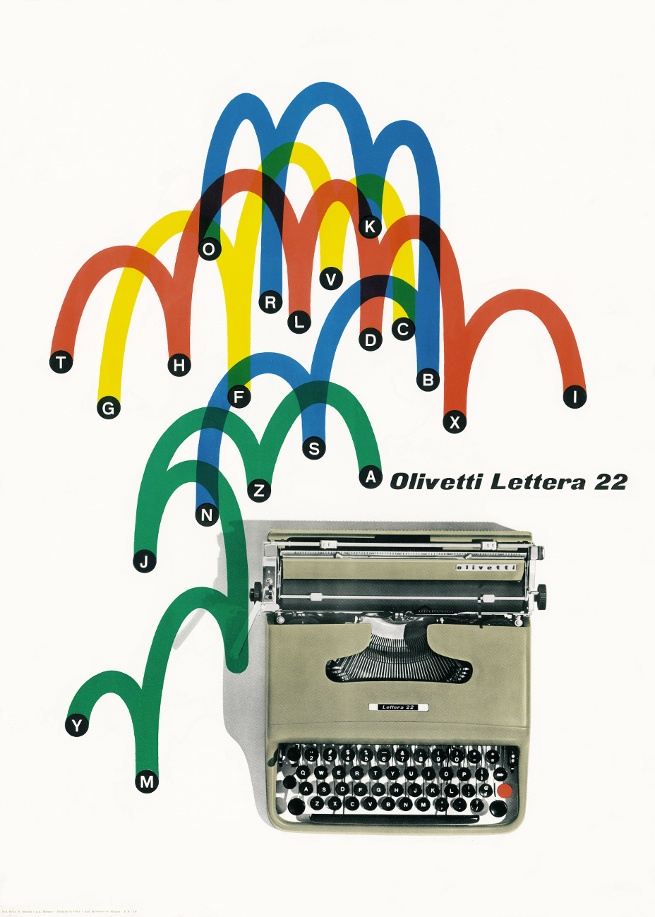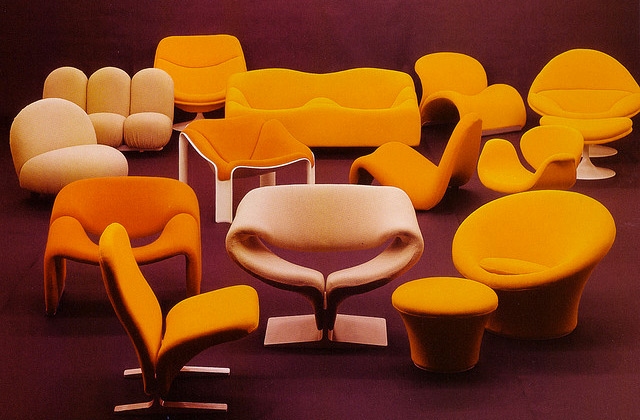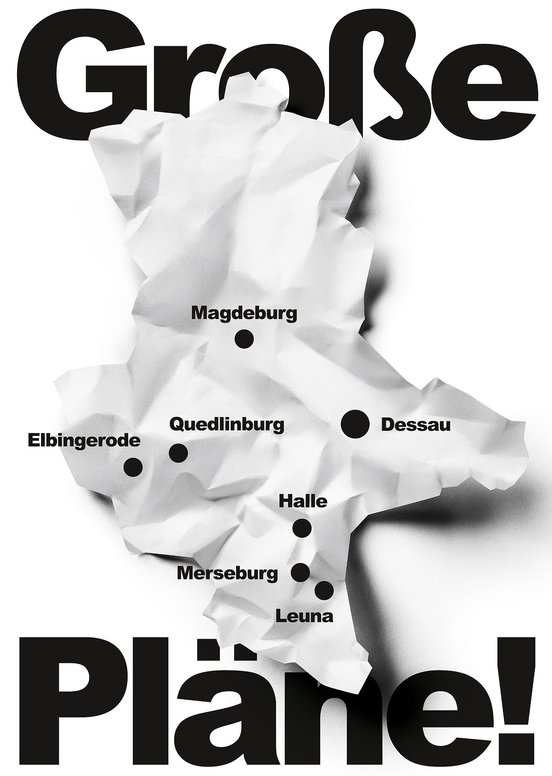5 New Design Exhibitions for May 2016
Whereas April showers tend to make you wet, grumpy and late, May showers are much more agreeable – or more precisely, the Eta Aquarids meteor showers are much more agreeable: a celestial showcase which reach their peak in early May and which, and in a wonderful example of the democracy of nature, are visible from anywhere on the planet.
For all who prefer to do their star gazing in the comfort of a museum or gallery, and without having to scan the evening sky for Aquarius, here our recommendations for new architecture and design exhibitions opening in May 2015. And in a break with tradition their are six, not five. If only five venues…..
“Parkomania. The Landscaped Gardens of Prince Pückler” at the Bundeskunsthalle, Bonn, Germany.
What to the rest of the world is “Neapolitan” ice cream is known to Germans as “Fürst-Pückler-Eis”, in honour of Hermann, Fürst von Pückler-Muskau for whom the first tri-layered vanilla, chocolate and strawberry ice cream* was, allegedly, created. The good Fürst Pückler was however not just an avid fan of frozen deserts but a traveller, bon vivant, writer, statesman and garden designer. Inspired by late 18th/early 19th century English garden architecture Fürst Pückler began in 1815 with the transformation of the grounds of his estate at Bad Muskau, a community on the modern German-Polish border not far from Cottbus, into his interpretation of the contemporary English garden; albeit in comparison to the majority of the English gardens of the day one which was freely open to all. Covering some 830 hectares Park Muskau was added to the UNESCO World Heritage List in 2004 with the organisation’s website noting “the park pioneered new approaches to landscape design and influenced the development of landscape architecture in Europe and America. Designed as a “painting with plants”, it did not seek to evoke classical landscapes, paradise, or some lost perfection, instead using local plants to enhance the inherent qualities of the existing landscape.” In addition to Park Muskau Hermann, Fürst von Pückler-Muskau also created landscaped gardens for his estate at Branitz and for Park Babelsberg near Potsdam, gardens which were amongst the most modern and innovative of their time and thus belong to some of the finest examples of both 19th century garden design and also of the possibilities of landscape architecture. And which also form the focus of Parkomania. Presenting some 250 objects including original plans, historic photographs and a first edition of Fürst Pückler’s 1834 book “Andeutungen über Landschaftsgärtnerei” – Deliberations on Landscape Gardening – the exhibition promises to provide an excellent introduction to an important protagonist of a genre we all appreciate but which, and if we’re all honest, only very few of us give the respect it deserves. In addition to the exhibition itself Parkomania features a garden à la Pückler on the roof of the Bundeskunsthalle. We sadly can’t find any information as to which ice cream flavours are/will be available in the Bundeskunsthalle cafe……
Parkomania. The Landscaped Gardens of Prince Pückler opens at the Bundeskunsthalle, Friedrich-Ebert-Allee 4, 53113 Bonn on Saturday May 14th and runs until Monday September 14th
* We know, we know, yes, there are all sorts of versions, but let’s just pretend we’re correct.
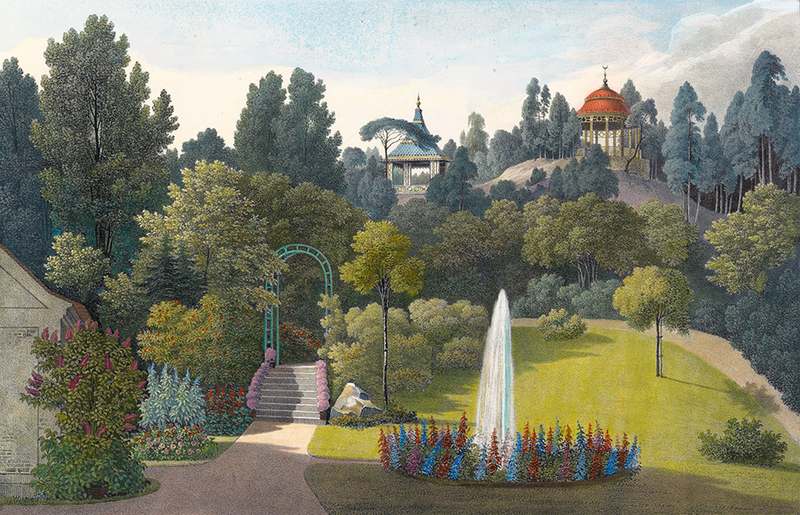
Pleasureground am Bad from Hermann Fürst von Pückler-Muskau’s book, Andeutungen über Landschaftsgärtnerei 1834 (Courtesy of the Bundeskunsthalle Bonn)
“Olivetti: Beyond Form and Function” at the Institute of Contemporary Arts, London, England
There can be few companies who better represent the development of post-war European industrial design, and for all Italy’s importance to such, than the typewriter, computer and telecommunications company Olivetti. Established in 1908 Olivetti was/is in many ways the European pendant to America’s IBM: a company who very early on understood the advantages of taking a holistic design-led approach to not only their products but also their production processes, administration, interior design and communications. And who knew how to manage and optimise such. Cooperating with an enviable roster of international designers and architects including, for example, Studio BBPR, Le Corbusier, Mario Bellini or Michelle de Lucchi the Olivetti legend was largely written with typewriters such as the 1959 Lettera 22 by Marcello Nizzoli or the Valentine by Ettore Sottsass from 1969. Organised by the Associazione Archivio Storico Olivetti and focussing largely on the post-war years when Olivetti’s star was arguably rising faster than that of any other European industrial concern, the Institute of Contemporary Arts’ exhibition promises objects, photographs and films which explore the company’s spatial design, graphic design and architecture. If not the product design per se. But then, for Olivetti product design was always part of a wider, universal, and integrated, corporate philosophy.
Olivetti: Beyond Form and Function opens at the Institute of Contemporary Arts, The Mall, London SW1Y 5AH on Wednesday May 25th and runs until Sunday July 17th.
“Bent, Cast & Forged. The Jewelry of Harry Bertoia” and “Atmosphere for Enjoyment. Harry Bertoia’s Environment for Sound” at the Museum of Arts and Design, New York City, New York, USA
Although arguably best known for his furniture design work Harry Bertoia wasn’t a furniture designer: he was an artist and metalsmith for whom furniture design was but one expression of his creativity. Something we imagine that the New York’s Museum of Arts and Design will underscore in a double-header of Harry Bertoia exhibitions this summer. Originating from Harry Bertoia’s alma mater Cranbrook Academy of Art, Bent, Cast & Forged represents the first museal exploration of Harry Bertoia’s jewellery design. And thus the first museal exploration of a central aspect of Harry Bertoia’s oeuvre; jewellery design was one of the earliest genres in which Harry Bertoia experimented, something he developed upon taking charge of the Cranbrook metal workshops in 1939 and in which his experiences with form, space, material and reduction were to be important for his later sculptural and furniture design work. And his musical works. From the 1960s onwards Harry Bertoia began exploring the possibility of creating sculptures which everyone, regardless of talent, could play as musical instruments; and over the next two decades created around 100 sound sculptures with which he recorded 11 albums. Under the title Atmosphere for Enjoyment the Museum of Arts and Design will not only display some of Bertoia’s sound sculptures, but also promises original recordings, a sound installation by John Brien created from Bertoia’s original recordings and a series of concerts.
“Bent, Cast & Forged. The Jewelry of Harry Bertoia” & “Atmosphere for Enjoyment. Harry Bertoia’s Environment for Sound” open at the Museum of Arts and Design, MAD, 2 Columbus Circle, New York, NY 10019 on Thursday May 3rd and run until Monday September 25th
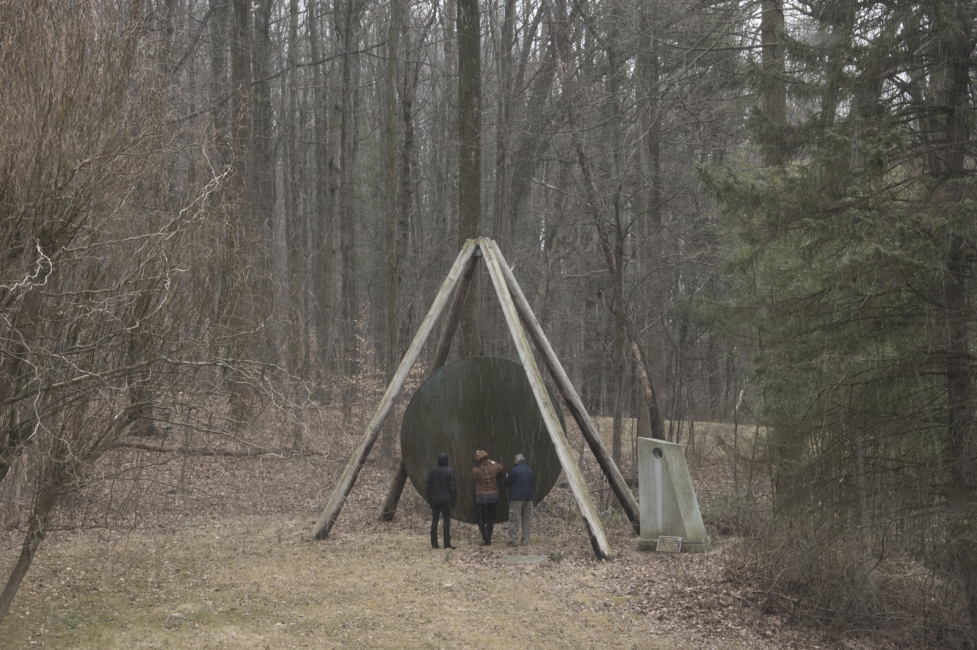
Harry Bertoia’s gravesite, Pennsylvania. With the most delightful gong. (Photo by John Brien, Courtesy of Museum of Arts and Design, New York City)
“Pierre Paulin” at Le Centre Pompidou, Paris, France
The name Pierre Paulin may not mean that much to that many, but his chair designs will, for all works such as the Oyster Chair, Orange Slice, Little Tulip or Ribbon Chair. Born in Paris in 1927 Pierre Paulin studied at the city’s École Camondo before going on to work for first Thonet and subsequently the Dutch manufacturer Artifort for whom he realised the majority of his important, and most popularly enduring and endearing, furniture works. Marking a clear break from the strict quadratics and austerity of inter-war functionalists Pierre Paulin’s furniture however maintains the reduction in materials, reduction in volume and experimentation with construction principles, but in objects which are much more homely, domestic and universally inviting than the more subjective functionalist works. And as such Pierre Paulin helped pave the way for many of the developments in contemporary furniture design. In addition to his furniture design work Pierre Paulin was also a much requested interior designer, and in addition to creating interiors for the private Élysée apartments for two French Presidents – Georges Pompidou in 1971 and François Mitterrand in 1984 – he was also responsible for creating the interior design for the Denon Wing of the Louvre Museum. Pierre Paulin died in 2009 and with their forthcoming exhibition Le Centre Pompidou promise to present not only the familiar Pierre Paulin but also the unfamiliar Pierre Paulin as expressed through little and lesser known works, models and prototypes. Presenting around 100 items the exhibition isn’t large but does promise a tour through Pierre Paulin’s 50 years of creativity and thus should not only honour one of the most important 20th century French designers but also help explain why Pierre Paulin is one of the most important 20th century French designers.
Pierre Paulin opens at Le Centre Pompidou, Place Georges-Pompidou, 75191 Paris on Wednesday May 11th and runs until Monday August 22nd.
“Big Plans! Modern Figures, Visionaries, and Inventors. Applied Modernism in Saxony-Anhalt 1919-1933” at Bauhaus Dessau, Dessau, Germany
Without wanting to appear cheeky, travelling through the contemporary Sachsen-Anhalt, as we often do, it does seem remarkable, if not ridiculous, that one of the most important movements in the history of European architecture and design was partly rooted in such a region of eastern Germany, situated as it is a little south of Berlin but just far enough away to be untroubled by the German capital. But it was. Not only from 1925 onwards in the form of the Bauhaus school in Dessau, but from much earlier: Burg Giebichenstein College in Halle, the Junkers Factory in Dessau, the architectural innovations of Bruno Taut in Magdeburg or the experimentations in the chemical and rocket industries, among many other examples, made Sachsen-Anhalt one of the creative hotspots of inter-war Europe. As we said, we don’t want to appear cheeky, but travelling through …….. To celebrate the region’s contribution to international modernism, and by extrapolation contemporary architecture and design, the Stiftung Bauhaus Dessau has organised under the title “Große Pläne!” – Big Plans! – an exhibition programme which extends beyond their own Gropius walls and features events and exhibitions in locations as diverse as Halle, Quedlinburg or Leuna. Modern Figures, Visionaries, and Inventors is the Bauhaus Dessau’s own contribution, and in many ways the programme’s opening event. Focussing on four major themes – Ascending, Systematic Settlement, Practising Learning and Advertising Mechanism – the exhibition promises to explore through a combination of documents, photos and films the relevance and legacy of the developments in aeronautics, mechanics, housing, urban design, education and advertising which occurred in Sachsen-Anhalt in the course of the 1920s. In addition to the exhibition in Dessau Große Pläne! features some 17 exhibitions throughout the region and summer. Full details can be found at http://grosse-plaene.de/
Big Plans! Modern Figures, Visionaries, and Inventors. Applied Modernism in Saxony-Anhalt 1919-1933 opens at Stiftung Bauhaus Dessau, Gropiusallee 38, 06846 Dessau-Roßlau on Wednesday May 4th and runs until Friday January 6th 2017.
Tagged with: Bauhaus, Bonn, Dessau, Harry Bertoia, London, New York, Olivetti, Paris, Parkomania, Pierre Paulin, Stiftung Bauhaus Dessau
